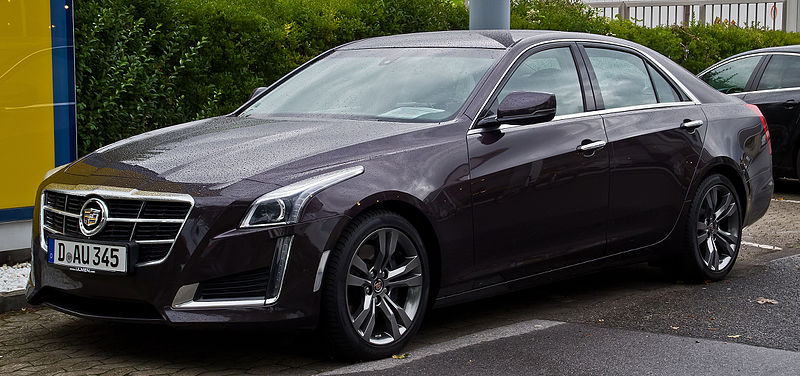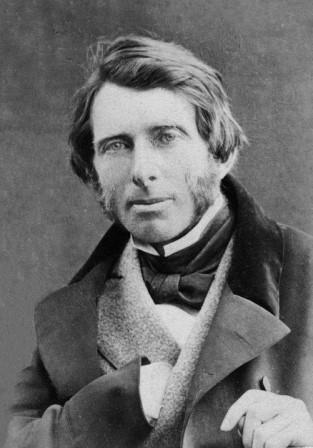Terrestrial and Solar Resources in a Steady State Economy
by Herman Daly
Let us consider a different slant on the current discussion about the necessity versus sufficiency of renewable energy for a steady state economy at the present physical scale.
Pursuant to the pioneering economics of Nicholas Georgescu-Roegen (G-R), we recognize two sources of the low-entropy flow that sustains our lives: the solar and the terrestrial. They differ in their pattern of scarcity. The solar energy source is practically infinite in its stock dimension, but finite and dispersed (yet abundant) in its flow rate of arrival to earth. The terrestrial source of low-entropy matter-energy consists of concentrated deposits of minerals in the earth’s crust, including fossil fuels which are ancient solar energy accumulated over billions of years.

“Low entropy” means highly concentrated, in the case of energy, and highly ordered in the case of materials. Low-entropy resources such as timber, steel, and refined oils are more valuable and useful than high-entropy resources such as sawdust, rusted metals, and crude oil. (Highest entropy is pollution or, more philosophically, physical chaos.) (Image: CC BY 3.0, Credit: Ibrahim Dincer and Yunus A. Cengel)
Terrestrial low entropy is limited in its stock dimension, but can be used up at a flow rate of our own choosing. We cannot mine the sun to use tomorrow’s solar energy today, we must wait for it to arrive tomorrow. We can, however, mine and use up today the accumulated solar energy of Paleolithic summers, and have chosen to use it rapidly, at least during the past two centuries. We have thereby become more dependent on the scarcer terrestrial source, rather than the abundant solar source, than we were in pre-industrial times. We prefer the terrestrial source because it is already here and already concentrated—and we are impatient to use it to grow. We, especially economists, think that thanks to growth the future will be richer than the present, and, therefore, the (growth-inflicted) costs of depletion and pollution will be easier to bear.
Solar energy is abundant and renewed every day. To capture its flow requires extended space covered by a “net” made out of highly structured materials. These structures wear out over time and need maintenance, as well as replacement, and of course require initial construction. These needs must be largely met out of our diminishing terrestrial stock of low-entropy matter-energy. Current sunlight and terrestrial material collectors are complementary factors. The one in short supply is therefore limiting. The limiting factor is terrestrial low-entropy, concentrated materials in the earth’s crust, including fossil fuels. To see how useless abundant solar energy would be without material structures capable of capturing it, one need only look at the barren moon, or Mars, etc.
Prudential Use of the Limiting Factor
The economic question then is, how best to use the limiting factor? We should focus our attention on how to allocate our scarce dowry of terrestrial low entropy. We have two general alternatives. We can consume it directly in building cruise ships, jetliners, rockets, and Cadillacs—or we can invest it in structures that tap into our more abundant solar source of low entropy. We collect solar energy in two basic ways. The first way is indirectly through the photosynthesis of plants in agriculture, forestry, ranching, hunting, fishing, etc. Other species concentrate, to our benefit, the solar energy captured in the process of photosynthesis. And we exploit their population growth, either by taking only a renewable yield or by extinguishing the entire population for our one-time greedy bonanza. The other way is by investing in direct solar collection by modern technologies such as photovoltaics (PV) and concentrating solar-thermal power (CSP).

Producing a Cadillac comes at the cost of future human lives. (Image: CC BY-SA 3.0 DE, Credit: M 93)
Our human lives require the conversion of incoming solar energy by photosynthesizing plants and thenceforth other species at lower trophic levels into food and fiber above their own maintenance requirements. Given sufficient bounty from these other species, we can then invest resources beyond our own mere maintenance. Investing terrestrial low entropy in a plow, for example, increases our ability to tap incoming sunlight for vital purposes. Investing in a Cadillac, on the other hand, is not a vital purpose but rather a luxury expenditure of our limiting factor. This led G-R to a rather dramatic conclusion: “The upshot is clear. Every time we produce a Cadillac, we irrevocably destroy an amount of low entropy that could otherwise be used for producing a plow or a spade. In other words, every time we produce a Cadillac, we do it at the cost of decreasing the number of human lives in the future.”[i]
It seems that in spending our limiting factor we face a tradeoff. Spending it on present luxury has the opportunity cost of fewer lives in the future (fewer plows, less sunlight captured, less food, fewer people). Saving it for future plows has the opportunity cost of less luxury in the present. This basic tradeoff exists regardless of how efficient the solar collectors may be.
No Wealth But Life

“There is no wealth but life. Life, including all its powers of love, of joy, and of admiration. That country is the richest which nourishes the greatest number of noble and happy human beings.” –John Ruskin
(Image: CC0 1.0, Credit: William Downey)
G-R’s argument was anticipated by Henry David Thoreau’s oft-quoted insight that “the cost of a thing is the amount of what I will call life which is required to be exchanged for it, immediately or in the long run.” Or as John Ruskin put it more succinctly, “There is no wealth but life.” Life requires current sunlight, and the most vital use of accumulated Paleozoic sunlight is to build or preserve material structures capable of increasing our ability to capture current sunlight.
The realization that the cost of present luxury is foregone future lives is dramatic and sobering. However, life with zero luxury at a mere basic subsistence may not offer much enjoyment, and reasonable people are certainly not willing to live that way. Yet extravagant luxury and gross inequality become less tolerable when the same reasonable people recognize the opportunity cost in terms of “good life” foregone. So, we are forced to ponder a big question posed by G-R: “Is it not true that mankind’s problem is to economize S (a stock) for as large an amount of life as possible, which implies to minimize sj (a flow) for some ‘good life’?”[ii]
Or, to put it more simply, should we not strive to maximize cumulative lives ever to be lived over time by depleting terrestrial low-entropy stocks at a rate that is low but sufficient for a “good life”? There is no point in maximizing years lived in misery, so the qualification “for a good life” is important.
I have always thought that G-R should have put that question in bold in the text rather than hiding it in a footnote. True enough, eventually the terrestrial stocks will be gone, even as the sun continues to shine. Mankind will revert to what G-R called “a berry-picking economy” until the sun burns out—if not driven to extinction sooner by some other event, as seems increasingly likely.[iii] But in the meantime, striving for a steady state with a rate of resource use sufficient for a good (not luxurious) life, and sustainable for a long (not infinite) future, seems to me a worthy goal. It’s a goal of maximizing the cumulative life satisfaction possible under finite and depleting terrestrial resource constraints.
Key Questions for Citizens and Policy Makers
G-R’s big question raises a number of others that get more pressing by the year as GDP pushes upward to the unsustainable brink:
- How much resource use per capita is sufficient for a good life?
- How do we ensure that everyone gets that amount?
- How large a population can a viable technology support at that standard of consumption without excessively sacrificing carrying capacity and future life?
- How much of the scarce terrestrial stock of low entropy can be economically invested in further tapping the abundant solar flow? In other words, do proposed direct solar technologies have an EROI greater than one?
- Is indirect or direct collection of solar energy a more economic investment at the present margin (i.e., more reforestation and conservation of ecosystems, or more PV and CSP)?
These questions have not been central to modern growthist economics—indeed, not even peripheral! That is why steady-state economics puts them front and center, even into proposed legislation such as the Full and Sustainable Employment Act (pursuant to which the cabinet-level Commission on Economic Sustainability would grapple with such questions). In a steady state economy, technology is encouraged to increase the quality of life but not the quantity we know as GDP, the growth of which entails more population, consumption, and throughput of low-entropy resources.
The debate about net energy yields of direct solar capture is important, although difficult to resolve by calculation because of hard-to-define boundary conditions. Does the energy cost of a solar collector include the energy expended in mining the materials? Out of today’s mines or tomorrow’s depleted mines? In transporting the materials? Do we count the energy used to produce the products consumed by the miners? By the miners’ families? By the engineers who never set foot in the mine but design the process? By the teachers who trained the engineers and the miners? By the bankers and lawyers who finance the mine’s operation? Etc.
Yet the problem is resolvable by experiment, if not by calculation. Moreover, the experiment is also a very reasonable economic policy: Raise the price of the limiting factor by a stiff carbon severance tax (or preferably a strict cap-auction-trade system on carbon extraction) and redistribute the revenue progressively. Then, if a technology uses a greater integrated sum of fossil fuels (terrestrial low entropy) than it replaces or saves, it will be more expensive and selected against. If on the other hand it saves or replaces more than it uses it will be less expensive and selected for.
More efficient technologies for using terrestrial resources—including for the purpose of capturing the solar flow—increase the range of feasible answers to the tradeoffs identified by G-R’s analysis, but his fundamental questions are economic and ethical, and remain central regardless of technical efficiency. In policy, sequence matters: “limits first” induces “efficiency second.” Putting efficiency first makes limits less pressing and encourages continuing temporarily along the stupidly happy growth path to depletion, pollution, and collapse.
[i] Georgescu-Roegen, N. 1976. Energy and Economic Myths: Institutional and Analytical Economic Essays. Pergamon, New York. See page 59.
[ii] Georgescu-Roegen, N. 1975. Energy and economic myths. Southern Economic Journal 41(3):347-381. See in particular page 368.
[iii] Georgescu-Roegen, N. 2011. “Energy and economic myths.” From Bioeconomics to Degrowth: Georgescu-Roegen’s ‘New Economics’ in Eight Essays, Edited by M. Bonaiuti. Routledge, New York.
 Herman Daly is CASSE Chief Economist, Professor Emeritus (University of Maryland), and past World Bank senior economist.
Herman Daly is CASSE Chief Economist, Professor Emeritus (University of Maryland), and past World Bank senior economist.



I would just like to point out that this subject of renewable vs. unrenewable resource allocation by Prof. Daly is both of fundamental importance and potentially popular. I am certain that good-hearted and popular activists such as Michael Moore will embrace this argument.
In contrast, the tack of Prof. Czech in recent statements–which might be paraphrased as, “There is more to sustainability than renewable energy…”–seems to have precisely ticked-off Michael Moore et al.
I myself have a genetic preference for the Czech approach. So I would not want anyone to ask that he change his stripes. But on the contrary–I suggest that more might be gained if, at the bottom of such articles as this by Prof. Daly–a gentle nod could be given to bridge the two approaches for the popular mind. And meanwhile perhaps even strengthening the greater persuasiveness of the Daly approach. For example perhaps…
We all grew up learning about amazing technological advances that increased human productivity tenfold or a hundred fold. Not once but repeatedly. The McCormick reaper–the automobile–the personal computer. Yet in spite of these advances, we have moved from an economy where it was a normal goal for one parent to support a family–to a situation where both parents are assumed to require full time jobs–and are actually less secure. This is economically moving backward, not forward. What has happened to all the supposed benefits of “growth”?
Most benefits of modern life are not due to sensible economics–but due to the fact that fossil fuel has been almost free, relatively speaking. Even within its finite lifespan, the misallocation of non-renewable resources has been a proven failure. Similarly, the full benefits of moving toward almost-free solar and wind energy could be largely lost by a system of “growth for the sake of growth.”
To realize the promise of moving toward sustainable energy, we also must move toward an economic system that values life above growth.
Mr Daly for me points directly at the approach we ought to make when we are dealing with our present climate and general environmental crises. The problem, though, with the growth model is not that it is merely unsustainable; this we can show in all sorts of ways, sophisticated or very basic. The problem is in how do we define what Mr Daly rightly points out as important and central, “the good life.” How do we even reach a sensible consensus which in turn could lead to practical policies? The defining must resonate with the vision of how we are to organize ourselves productively and this must bring in the social and the political and the spiritual as well. Right now in the US, for example, we have enormous abundance and yet people go hungry, ill clad and homeless and minorities are oppressed in one way or another. How is this possible? Why does it continue and how can we even begin to address it if we insist on defining freedom based on competitive self-empowerment; how can we use the competitive market system to achieve the transition to social orders that honors our unique diversity and develops the various talents coming from this to serve everyone’s human needs,. We are speaking and communal beings and this means we to need communicate together to transition to a human commonality( the “common good”), a non-competitive, cooperative, ecological, steady-state economic provisioning planetary society socially diverse in its landscapes. I call this the Gain Society.
Thank you Mr Daly and Mr Huang for contributing to this great conversation.
Thank you for sharing this thought-provoking article on the role of terrestrial and solar resources in a steady-state economy. As we face the challenges of climate change and resource depletion, it’s becoming increasingly clear that our current economic system is not sustainable in the long run. A steady-state economy offers a promising alternative, where the focus is on meeting basic needs rather than endless growth. The article provides a useful analysis of how renewable energy sources like solar power can play a key role in a steady-state economy, by reducing our dependence on finite resources and minimizing environmental impacts. I believe that this kind of holistic approach to sustainability is crucial for creating a more equitable and resilient future for all.
Thank you for your enlightening contribution to the discourse on sustainable resource management and a steady-state economy. Your article has inspired me to further explore these topics and contribute to the ongoing efforts aimed at achieving a more sustainable and equitable future.